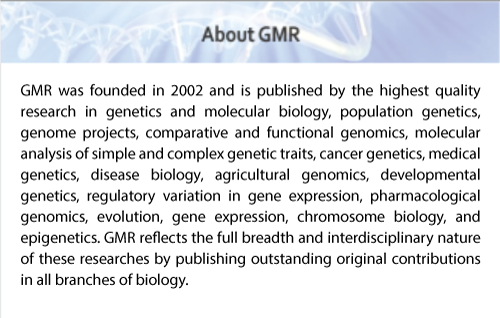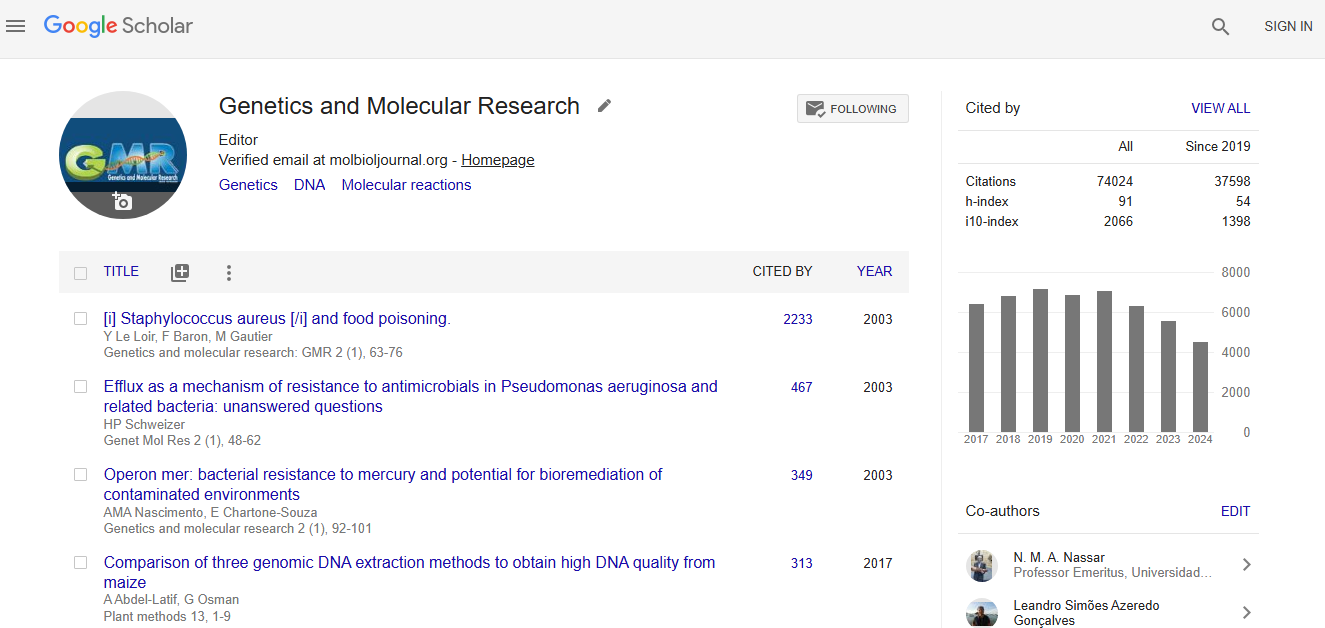
A.P. Souza
Study of closely related species within the Physalaemus cuvieri group (Anura): contribution of microsatellite markers
Various species of the Physalaemus cuvieri group of frogs are difficult to distinguish morphologically, making molecular analysis an attractive alternative for indentifying members of this group, which is considered to be at risk because of loss of habitat. The genetic structure of natural populations of P. ephippifer and P. albonotatus species was investigated and .. Read More»
Genet. Mol. Res. 10(3): vol10-3gmr1136
DOI: 10.4238/vol10-3gmr1136
Microsatellite markers for the Cabre├?┬║va tree, Myroxylon peruiferum (Fabaceae), an endangered medicinal species from the Brazilian Atlantic Forest
The Cabreúva tree, Myroxylon peruiferum, is an endangered tropical species from Brazil used in forest restoration projects. It is known for its medicinal properties. Eleven microsatellite markers were developed for this species, from a microsatellite-enriched library. Nine of these markers, characterized in 30 individuals from a semideciduous forest .. Read More»
Genet. Mol. Res. 13(3): 2014.March.26.1
DOI: 10.4238/2014.March.26.1
Unraveling the variability and genetic structure of barker frog Physalaemus cuvieri (Leiuperinae) populations from different regions of Brazil
The barker frog Physalaemus cuvieri is widely distributed in South America and is found in all regions of Brazil. Significant intraspecific morphological variation in this species has been reported. To determine the genetic structure of the natural Brazilian populations of P. cuvieri, 10 different populations geographically separated by 99.41 to 2936.75 km were eval.. Read More»
Genet. Mol. Res. 13(3): 2014.February.21.4
DOI: 10.4238/2014.February.21.4
New loci of Lychnophora ericoides and transferability to Lychnophora pinaster, endangered medicinal species from Brazil
Lychnophora ericoides and Lychnophora pinaster are species used in popular medicine as analgesic or anti-inflammatory 21 simple sequence repeat loci of L. ericoides were developed and transferred to L. pinaster. Three populations of L. ericoides and 2 populations of L. pinaster were evaluated; they were collected in the State of Minas Gerais. Population parameters were estimated, and the mean v.. Read More»
Genet. Mol. Res. 13(4): 2014.December.19.8
DOI: 10.4238/2014.December.19.8
Microsatellite in Aeschynomene falcata (Leguminosae): diversity, cross-amplification, and chromosome localization
Aeschynomene falcata is an important forage species; however, because of low seed production, it is underutilized as forage species. Aeschynomene is a polyphyletic genus with a challenging taxonomic position. Two subgenera have been proposed, and it is suggested that Aeschynomene can be split in 2 genera... Read More»
Genet. Mol. Res. 13(4): 2014.December.4.34
DOI: 10.4238/2014.December.4.34
Impact Factor an Index

Google scholar citation report
Citations : 74024
Genetics and Molecular Research received 74024 citations as per google scholar report
